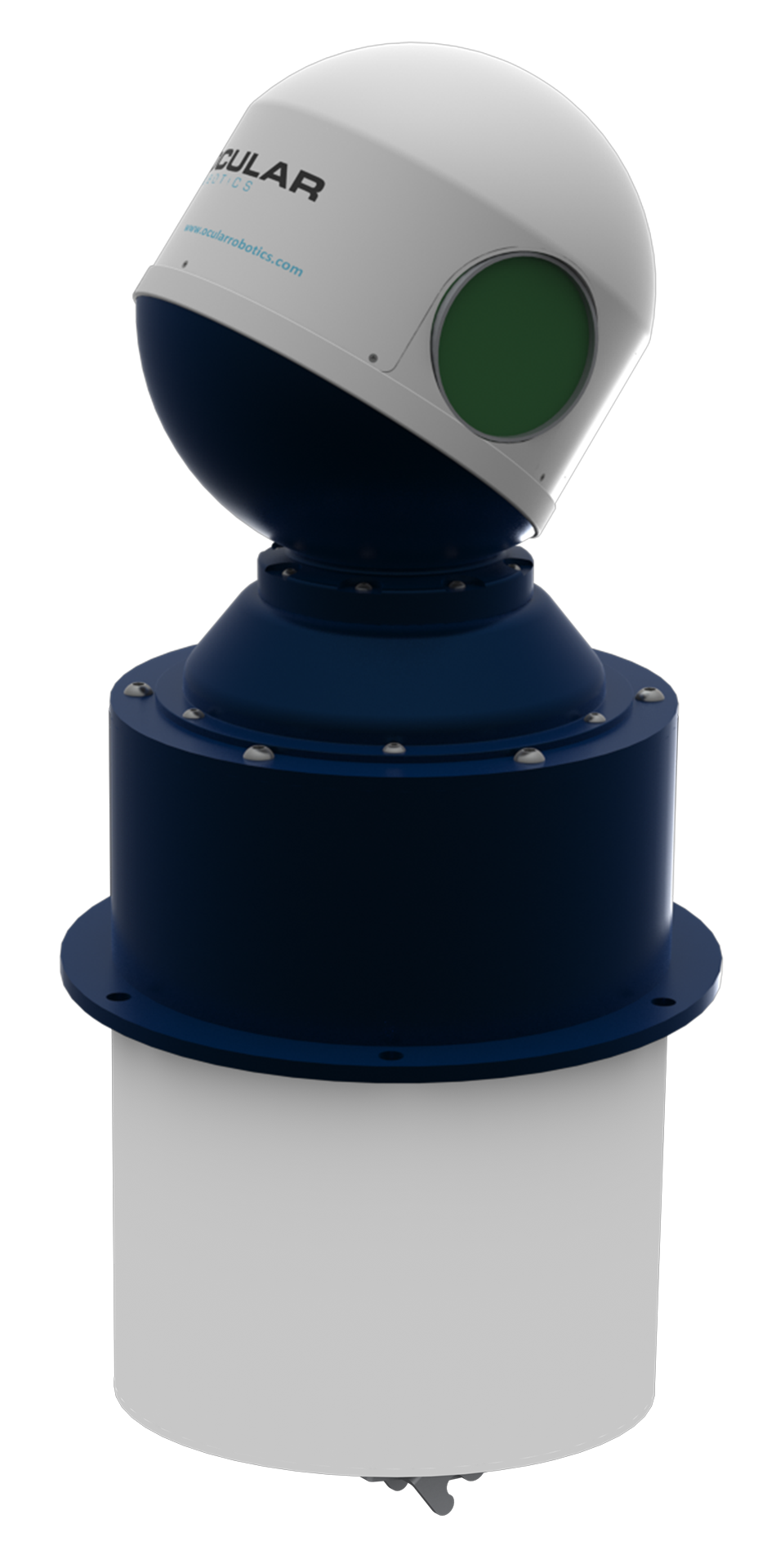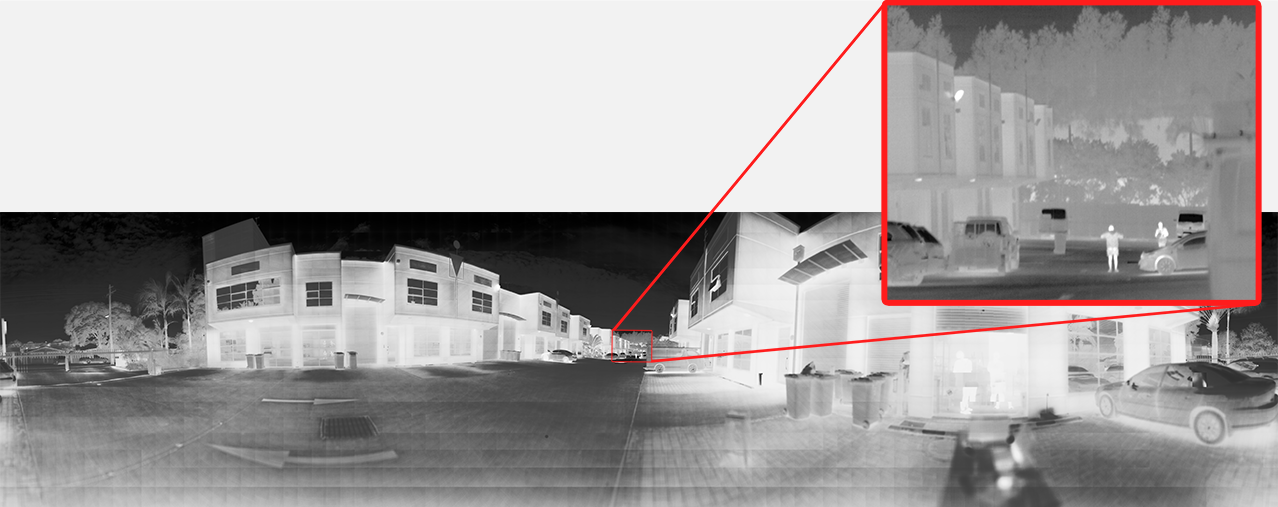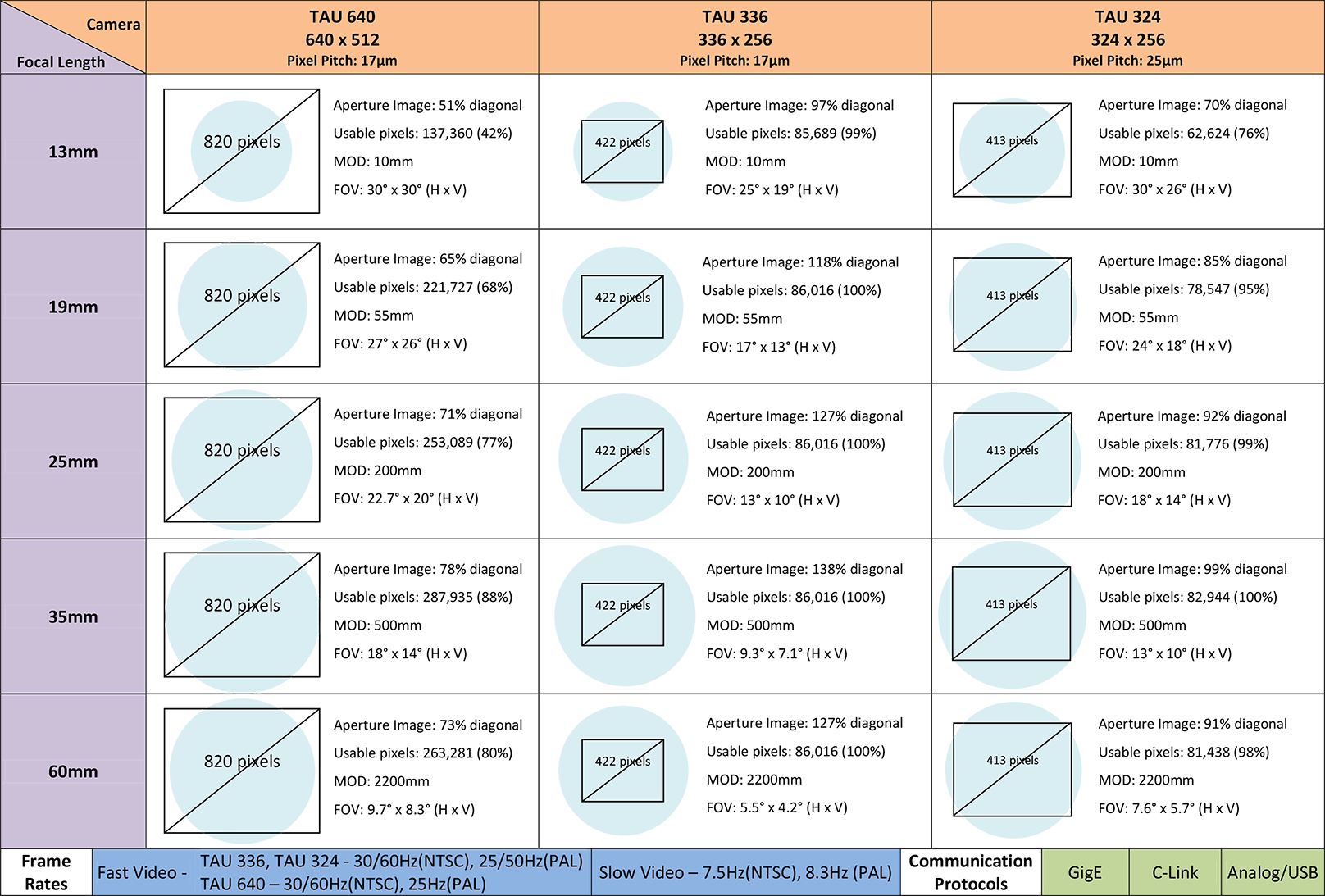
-

The RobotEye RELW60 Thermal is a two-axis high performance thermal vision system with unprecedented motion bandwidth. RobotEye Thermal Vision systems are conceptually similar to conventional pan-tilt or gimballed systems in that they both effect the pointing of cameras about two axes, but that is where the similarity ends. When applied to thermal cameras with their high cost and low resolution the benefits of the fast and precise camera pointing delivered by RobotEye is amplified.
The RobotEye technology core on which the RELW60 is based enables the view of the camera to be steered while both motors and the camera itself remain completely stationary, delivering very high slew rates and precision simultaneously. The implications of this are manifold and it means RobotEye Thermal Vision systems exhibit a number of properties that set them apart from alternative systems. In particular the following characteristics have significant impact on a wide range of common applications for directable thermal camera systems, and the enabling of new applications not previously possible.
Motion Bandwidth
The most obvious way in which RobotEye systems differ from alternative systems is the motion bandwidth available to the user. RobotEye Thermal Vision systems significantly exceed, often by orders of magnitude the capabilities of alternatives in terms of speed and acceleration of the system aperture all while maintaining excellent precision. With aperture accelerations up to 60,000°/s2 and very high aperture slew rates, not only are common behaviours currently undertaken by pan-tilt and gimbals systems able to be completed much more rapidly and efficiently but a whole new range of applications become possible, including:
-
-
- High Performance and Multiple Object Tracking: Track very fast and erratically moving objects or any number of more slowly moving objects.
- Extreme Performance Stabilization: See details of our stabilized camera products on the Ocular Robotics website.
- Advanced Security and Surveillance Behaviours: Delivering greatly improved ability to capture important events as they occur on security/surveillance networks.
- Nausea Free Telepresence/Teleoperation: The RELW60’s remarkable responsiveness allows use of head mounted displays without the usually associated nausea caused by latency in alternative camera pointing systems.
- Mapping and Panorama Capture: Rapidly map areas within the RELW60’s field of regard, generating high resolution wide area images.
-
Precision
While some pan-tilt and gimbals systems are capable of very precise motion, none are capable of simultaneous precision and high speed. In contrast to this, RobotEye based systems are capable of moving with very high speed and accelerations while simultaneously delivering precision pointing of a camera’s field of view. This is because the RobotEye technology core addresses the central issue that limits the motion dynamics of alternative systems, the mass required to be moved to redirect the view of the camera.
The image below showcases the speed and precision of the RobotEye. The full image is a 114 MegaPixel panorama taken with an RELW60 configured with a TAU2 640 camera and 60mm Lens; the inset image shows a single 640 x 512 shot, the people in the image are approximately 100 m away.
-
-
Camera/Lens Options
The RELW60 offers a range of embedded FLIR TAU2 thermal camera core and lens combination options, the available options are detailed in the table in the Components tab. In addition to the resolution, FOV, frame rate and communication protocol options the table shows the view that can be expected through the RELW60 aperture with different camera and lens combinations.
Robustness
The RobotEye RELW60 Thermal has been designed to operate in the harshest environments. RobotEye systems have a natural immunity to shock and vibration transmitted through the platform to which they are attached making them ideal for extended service on ground, surface and air vehicles and other mobile equipment. This is achieved because the moving components in RobotEye systems are lightweight and supported at their periphery. In contrast to pan-tilt and gimbals systems have relatively large masses supported on shafts which under shock and vibration drive large forces back through the drive train shortening their serviceable lifetime. Other factors contributing to reliability of the RELW60 include:
- The absence of any slip rings in the system which is due to the fact that all electronics including the camera remain completely stationary during operation eliminating the need to pass electrical signals through rotating joints.
- The camera, motors and all electronics are located below the blue mounting flange as seen in the image on the adjacent page in a single enclosure or internal to the platform on which the RELW60 is mounted simplifying environmental protection.
Communications
The RELW60 communicates through a GigE interface as standard; offering a fully featured, encapsulated control solution and image data transfer supported by the RobotEye Thermal API. C-Link and Analog/USB communications is supported for legacy systems.
-
Mechanical
Maximum Aperture Slew Rate 5,400°/s* Maximum Aperture Acceleration 60,000°/s² Azimuth Axis Resolution 0.0025° Elevation Axis Resolution 0.0025° Azimuth Range 360° Continuous Elevation Range 70° (±35°) Accuracy ≤0.01° Weight 7.8 kg Electrical
Communication GigE / C-Link / Analog+USB Supply Voltage 24 VDC Power Consumption — Typical (average) <75 W — Maximum (transient**) 600 W Software
RobotEye Thermal C++ Development Library Windows/Linux Environmental
Operating Temperature Range -20°C – +70°C IP Class Rating 65 * At the maximum acceleration rate of 60,000°/s² more than a full rotation is required to reach 5,400°/s aperture slew rate.
** High current transients typically less than 2msSpecifications are subject to change without notice
-
RobotEye Thermal C++ Development Library — The RELW60 ships with a fully documented C++ class library for both Windows and Linux that can be used to simply and quickly interface to the vision system enabling rapid application development for RobotEye Thermal Systems users. The RobotEye Thermal Library delivers complete system control through the API with a simple path for image acquisition from the embedded thermal camera. The RobotEye Thermal driver class is a single API providing software access to both the motion and image acquisition capabilities of the RELW60. This single-point-of-contact reduces dependencies and accelerates software development. The RobotEye Thermal C++ Development Library supports a range of motion commands, two of which are the building blocks for most RobotEye motion behaviours relevant to RobotEye Thermal systems.
SetApertureAngles
The SetApertureAngles command is used where it is required that the system aperture move accurately to point in a specific direction. Using the SetApertureAngles command it is possible to move the system aperture to over 8 distinct locations randomly distributed within the RELW60’s 360° x 70° field of regard every second. If the pointing locations are compactly distributed such as in a grid formation rates exceeding 15 locations per second can be achieved. The motion enabled by SetApertureAngles is important for mapping such as when building panoramas, monitoring several distinct locations with a single camera system, tracking multiple objects and many more.
TrackApertureAngles
The TrackApertureAngles command provides extremely high bandwidth control. It is most commonly used where the system aperture is required to follow a path or moving object. TrackApertureAngles commands can be streamed to the RELW60 at up to 1kHz ensuring complex paths can be followed at high speeds. Typical uses for the TrackApertureAngles command are high performance tracking of a single object, stabilization using inertial or visual information and slaving for telepresence.
Knowing where the system aperture is at any point is also important to many applications. The RobotEye Thermal C++ Development Library also provides two low latency methods for accessing the current system aperture direction. GetApertureAngles provides low latency access to the current system aperture position on request, while streaming is available to access the current position of the system aperture at rates of up to 1kHz.
- Standard System Components
RobotEye RELW60 Thermal Vision System
RobotEye Thermal C++ Library
Termination Kit -
Datasheet
RobotEye RELW60 THERMAL Datasheet





